Book review: Pocket History of Theology
by Roger E. Olson and Adam C. English
★★★★
For anyone wanting a quick overview of Christian theology through the last two millennia, this condensation of Roger Olson’s The Story of Christian Theology hits all the high points. Beginning with the early second century, you’ll meet church fathers and apologists Ignatius, Justin Martyr, Irenaeus, Clement, Tertullian, Origin and Cyprian. On into the turbulent centuries following, you’ll learn about the council of Nicaea (and the Nicene creed), the council of Constantinople, of Ephesus and of Chalcedon as controversy in the church escalates. You’ll meet St. Augustine, of course, and learn about the division of the church (what we now call the Orthodox church and the Catholic church, when neither are listening; the “Orthodox” hardly consider themselves less Catholic, and the “Catholics” hardly consider themselves less Orthodox).
As we move into the 16th century, division only continues. Luther, Zwingli, and Calvin are highly influential reformers, and a more extreme version surfaces with the Radical Reformers (often labeled Anabaptists, rejecters of infant baptism). Along comes the English reformation and the Catholic counter-reformation. Deism hopes to reconcile with modern science. And on into the 20th century, with the birth of fundamentalism.
This book is dry, but highly informative. An awful lot is packed into 100 pages.
Today, Christian theology is as diverse as ever, and the story of Christianity continues after this book concludes. I find myself reviewing books by Jewish Christians who interpret the life of Jesus within Hebrew roots, liberal Christians who reject anything miraculous, even Pagan Christians. I guess Jesus has something for everyone!

Book review: Atoms & Eden
by Steve Paulson
★★★★★
If you really want to start an argument, ask a room full of physicists this question: Are the laws of physics fine-tuned to support life? This question and others are debated in Steve Paulson’s collection of interviews. In the great “religion vs. science” debate, this is a meet-the-players book, from renowned atheists Sam Harris and Richard Dawkins to Roman Catholic John Haught to affirmed Muslim Nidhal Guessoum. En route, you’ll talk with Karen Armstrong, Daniel Dennett, Ken Wilber, Robert Wright, Elaine Pagels, Paul Davies, Steven Weinberg, and more … 20 interviews in all, and these are big names!
These are some of our greatest thinkers, and none are closed-minded. You won’t find anyone here who rejects the overwhelming evidence for evolution; Paulson purposefully excludes fringe theorists like “young earth” believers and intelligent design proponents, preferring to stay on the cutting edge of both science and religion. But what you will find here is an appreciation for today’s mysteries, like consciousness.
There’s another hot spot that’s sure to start an argument: the whole mind-body question. It’s very hard to figure out what’s going on when you throw together 100 billion neurons and 100 trillion connections, but is our mind (in religious terms our soul) hidden in there? Surprisingly, the majority of our greatest thinkers punt on the subject, sometimes suggesting consciousness is a topic we’ll never understand. As Dawkins says, “consciousness is … a very, very big problem.”
I found the book fascinating and, of course, highly intelligent; the best of its kind I’ve read. This is not a book about accepting or rejecting a particular caricature of God, such as the Judeo-Christian God. It is about the big questions: Can consciousness survive after death? (atheist Sam Harris: “I just don’t know.”) Is human existence a lucky evolutionary accident? Does the universe have a purpose? Is faith evil or necessary?
Buy this one.

Book review: Life In Abundance
by John R. Donahue, Editor
★★★★★
I introduced Raymond Brown a couple books back as one of the most important theologians of the 20th century. A few years after his sudden death in 1998, St. Mary’s Seminary and University in Baltimore hosted a conference titled “Life in Abundance,” to follow Brown’s lead in discussing the state of Johannine studies. This volume brings together presentations by scholars there.
Anyone who is a student of John’s Gospel will recognize many of the contributors: Alan Culpepper, Robert Kysar, D. Moody Smith and more. The articles are grouped into four categories: [1] Johannine Studies: Challenges and Prospects, [2] Historical Context and the Gospel of John, [3] Johannine Theology, and [4] Interpreting the Work of Raymond Brown.
Brown, according to Culpepper, “represents an advance over both the skepticism of Bultmann (and more recently the Jesus Seminar) on the one hand and the conservatism of Dodd, Robinson, and later D.A. Carson on the other hand.” For example, Brown originally accepted the traditional identification of the Beloved Disciple as John, son of Zebedee, but later changed his mind.
Brown entered the world of Johannine scholarship at the perfect time, it seems, just as the discovery of the Dead Sea Scrolls revealed a Jewish sect in first-century Palestine that expressed itself in much the same dualistic, exclusivistic terminology as John’s Gospel. We no longer need to explain the Fourth Gospel in terms of Hellenistic or Gnostic thought, for we now know there were similar forms of Jewish thought contemporaneous with the birth of Christianity. When in verse 5:24, John explains that “those who hear and believe have entered eternal life and have passed from death to life,” we can see traces of John’s realized eschatology, without completely rejecting the future eschatology displayed in the verses immediately following. Life in abundance … both now and later.
This is a scholarly book, very good for those wanting to catch up on the latest thinking about John’s Gospel. For that purpose, I give it five stars. If you’re looking for inspirational reading, this is probably not the right book.

Book review: Jesus and Buddha, the Parallel Sayings
by Marcus Borg
★★★★
Three thousand miles from where Jesus was born, another miraculous birth occurred: the Buddha. As the Buddha walked on water, passed through walls, and raised the dead, so did Jesus in his day. As the Buddha fed 500 with a few small cakes, so did Jesus work with loaves and fishes. Five hundred years after a terrible earthquake marked the death of the Buddha, the earth shook again when Jesus breathed his last.
Given the eerie parallels between these two lives, one naturally wonders if their teachings were also similar. In a book that is probably best read as a daily devotional, Borg provides a “Jesus” saying on the left side of each page, and a parallel “Buddha” saying on the right side. Here are some of my favorites:
Jesus: “There is nothing outside a person that by going in can defile, but the things that come out are what defile.” Buddha: “Stealing, deceiving, adultery; this is defilement. Not the eating of meat.”
Jesus: “Do not store up for yourselves treasure on earth, where moth and rust consume and where thieves break in and steal; but store up for yourselves treasures in heaven, where neither moth nor rust consumes and where thieves do not break in a steal.” Buddha: “Let the wise man do righteousness: A treasure that others cannot share, which no thief can steal; a treasure which does not pass away.”
Jesus: “Whoever blasphemes against the Holy Spirit can never have forgiveness, but is guilty of an eternal sin.” Buddha: “Do not let there be a schism in the order, for this is a serious matter. Whoever splits an order that is united will be boiled in hell for an aeon.”
What is going on, here? Were Jesus and Buddha spiritual masters inspired by a single cosmic source? Is the Christian “very God of very God” one with the Buddhist “God of gods?” You can’t help but be inspired as you contemplate the similarities of these two great religious leaders.

Book review: The Gospel and Epistles of John
by Raymond E. Brown
★★★
This book is now 23 years old, but it is one that every Bible scholar must read. Raymond Brown is considered by many to be the premier Johannine scholar of the 20th century, and is widely acknowledged by both the Church and by academia. Brown began writing about John and the Johannine community in 1960, culminating a quarter-century later in an exhaustive, 800-page tome on the epistles in 1982. This book brings it all together in one concise commentary. If you fancy yourself a Bible scholar but you don’t have time to study all of Brown’s works, you must at least read this short book.
You’ll find in this book no comprehensive discussion of the Johannine community, of the development and authorship of the Gospel, or even of Johannine theology in general. You’ll find very little about Brown’s contributions to understanding Johannine eschatology or to the identification of the “beloved disciple.” What you will get is a concise verse-by-verse commentary of the Gospel and epistles, which in itself provides a taste of Brown’s thinking.
Scripture from the Revised New Testament is printed on the top of each page, with Brown’s commentary on the bottom half. Because it’s a summary only, providing nothing new or provocative, I have a hard time granting it more than three stars, yet it is a must-read.

Book review: I Sold My Soul on eBay
by Hemant Mehta
★★★★★
Mehta is “the eBay atheist,” the nonbeliever who auctioned off the opportunity for the winning bidder to send him to church. Since then, Mehta has visited a variety of churches, from the cozy to the mega churches, and written about his experiences.
If you’re looking for comedy, this is not. The subtitle is “Viewing faith through an atheist’s eyes,” and Mehta, who stopped believing as a teenager, never crosses back over the line.
He begins his book by explaining what it is the nonreligious believe. He touches on prayer, suffering, child raising, and points out that atheism is not merely the denial of a supernatural being; it is a lifestyle. Then he narrates his journey from church to church, describing the events, the rituals, the music and more from an outsider’s viewpoint. At the conclusion of the book, Mehta offers suggestions for making the church experience more attractive and how to reach out to unbelievers.
What would it take for Mehta to become a believer? A miracle. A real miracle, not some “God helped me find a roommate” type of miracle. And I suspect Hemant speaks for a great number of atheists.
In a recent forum, someone made the statement that the believer will never understand the atheist’s mind, and the atheist will never understand the believer’s mind. I’m not sure I entirely agree, because many people grow from believers into atheists and vice versa. But the typical Christian suggestion that atheists work to suppress an inherent belief in God is no more true than the atheist idea that Christians are easily deluded. I have met many incredibly intelligent people on both sides of the line. Mehta’s book bridges the gap and breaks down the stereotypes.

Book review: Celebrating Jesus in the Biblical Feasts
by Dr. Richard Booker
★★★★
It’s impossible to recognize all the nuances of the New Testament writings without understanding the Jewish feasts. Consider especially the Gospel of John: It goes from one Biblical feast to the next with barely a let-up. This is one of John’s primary literary devices, where the festival celebrations provide a meaningful backdrop for Jesus’ lessons. Let me give you an example from Booker’s book, in his coverage of the Feast of Tabernacles:
As part of the ritual proceeding, a certain priest would draw water from the Pool of Siloam with a golden pitcher. He would then come to the altar at the temple where the High Priest would take the pitcher and pour the water into a basin at the foot of the altar. … About the time the water was being poured … [all the people] sought the Lord from Isaiah 44:3, which reads, “For I will pour water on him who is thirsty, and floods on the dry ground; I will pour my Spirit on your descendants, and my blessing on your offspring.”
Now we come to the words of Jesus in John 7:37. Picture him there in the temple as the ceremony concludes. On the last day of the feast of Tabernacles, Jesus stood and cried out, “If anyone thirsts, let him come to me and drink. He who believes in me, as the Scripture has said, out of his heart will flow rivers of living water.”
I have at least a half-dozen books about the feasts of Israel; it’s a basic necessity for anyone studying to publish a book about the Gospel of John. With perhaps the exception of an over-sized picture book (come on, who can resist that?) this one is my favorite. Booker will guide you through the entire year of festivals, from Passover to Hanukkah, adroitly explaining the significance of each traditional and ritual and how the events relate to the story of Jesus.
(Dr. Richard Booker is considered a pioneer and spiritual father in teaching on Israel, Jewish-Christian relations, and the biblical Hebraic roots of Christianity.)

Book review: Thinking Is Authorized!
by Nash Khatri
★★★★
With a mysterious Bang! 13.7 billion years ago, an incredible universe of time and space tumbled forth. Science and religion both are fascinated by this existence, as we humans peer ever deeper into the mysteries of the universe. But Nash’s book is different: it wonders what else is out there. It invites us to contemplate what lies outside our prison of time and space. This concept is so key to the book that Nash has given it a label: Lack of Time and Space, or LTS.
The greatest mystery of LTS may be life itself. Life, Nash contends, is special; we’ll never instill life in a robot, which will never be more than a construction in time and space. But where did life come from? How did emotion, thought, wonder, break into our world of time and space? Where does this life-matter go when we die? Is life truly eternal, existing in LTS? What does eternal mean where there is no time?
Nash Khatri meanders through these questions and more as he probes the mysteries of LTS. Nash obviously has a religious background, though he doesn’t discuss it in the book. He at time appears apologetic (though he needn’t be) for contradicting the beliefs of various religions. He points out the silliness of some of our age-old assumptions with both humor and respect.
At times, I would find myself asking: “Is this idea theologically sound?” And then, on the next page, “Is this idea scientifically sound?” You know, it really is hard to think beyond religion and science! In the end, I am unqualified to answer either question about the book, but thank you, Mr. Khatri, for encouraging me to think.

Book review: The Existential Jesus
by John Carroll
★★★★★
Ex-is-ten-tial –adjective: of or relating to existence, especially human existence.
This is Jesus, the way you’ve never read about him before. John Carroll draws primarily on the Gospel of Mark, a Gospel which rather quickly fell into disuse among early Christians as they favored the more majestic stories told by Matthew and the others.
Mark’s Jesus is far more human. He sometimes questions, sometimes fails. He is ridiculed by his family. Carroll portrays Jesus as a lonely, mysterious stranger with an obscure mission. By the end of his journey, he has lost all of his followers. “His life reaches its consummation in tragedy—a godless and profane one—and a great death scream from the cross, questioning the sense of it all.”
Mark’s story then closes with a mystery. An empty tomb, and three women fleeing in terror, told to tell no one of what they saw—or didn’t see. (Carroll is correct; the ending we have now in the book of Mark, describing the resurrection of Jesus, did not exist in the earliest manuscripts.)
Mark’s Gospel is, of course, one of four. Over time, the Jesus story grew in splendor, and by the time the fourth Gospel was written, Jesus had become God Himself. When I complete my book about John’s Gospel (yet a couple years away from publication), I am going to wander through every local bookstore and move my book next to Carroll’s, where the two extremes can sit side-by-side.

Book review: David and Solomon
by Israel Finkelstein and Neil Asher Silberman
★★★★
A Finkelstein book will be controversial; let’s establish that up front. And because there exists very little archaeological evidence outside the Bible story of Judah’s first kings, speculation will be a natural result of any such study. We know absolutely nothing from history about Saul and precious little about David and Solomon; in fact, the evidence is so sparse that a few scholars still doubt the existence of all three.
Finkelstein and Silberman don’t doubt, but neither are they able to provide 342 pages of historical analysis. Instead, they trace the legends of these early kings through a thousand years of Hebrew writings, both in and out of the Bible. The earliest folklore and Bible verses about David show him as a bandit leader of a small gang of traveling raiders. Later authors portrayed David as a poet and a founder of a great dynasty, as well as a sinner. Solomon’s reputation, as well, grew over time into a shrewd trader and wise sage.
How many of these writings are based on fact, and how many on legend? The authors’ scholarly research and field experience will make you reconsider.

Book review: Pagan Christianity?
by Frank Viola and George Barna
★★★★
No, this isn’t a “bash the Christians” book. It’s a “bash the church” book (lowercase “c”). The authors’ goal is to redirect Christians back to the original teachings of the New Testament, where the “Church” was never a building.
“Pagan,” as used by the authors, pretty much just means “different from what the New Testament teaches.” Their goal is to encourage Christians to embrace the original New Testament church.
Church buildings are wrong. Sacraments are wrong. Collection plates are wrong. Pulpits are wrong. You’ll get a earful, and if “wrong” means “not the way it was first done,” then the authors have a well-researched point. But an important distinction needs to be made: The New Testament church, in this book, should not be confused with the “first century church.” No extraneous Christian teachings are acceptable to Viola and Barna, who either ignore or condemn them. Even if some of these teachings are contemporary with New Testament writings. For example, church fathers Ignatius, Clement of Rome and Tertullian are criticized for introducing a clergy, and the Didache’s instructions are never mentioned by the authors, who insist that early Christian worship sessions had no structure. Perhaps the authors subscribe to the view that all of the New Testament Gospels and epistles were written in Paul’s time.
Part of the intrigue of this book, for me, is that I grew up in a nondenominational church similar to what the authors approve of as “organic,” and that ignores all Christian instruction outside the Bible. This church has a bit more structure to their worship than what Viola and Barna recommend, but it does meet in homes and all members participate equally in the service. It’s a “back to Jesus” movement patterned after the New Testament.
So, my church background may qualify me more than many reviewers to address both the pros and cons of the book’s arguments. And as such, I do have one criticism, which drops it from a 5-star to a 4-star rating: The passion of the authors overflows, which should be a good thing, but here it’s overwhelming. While they convincingly show that many Christian church customs differ from the first Christians, their underlying assumption that this is somehow bad gets pushed a little too hard for my taste, simply because in my experience, different church atmospheres and practices are appropriate for different people. We’re all unique, and different things bring us closer to God.
But enough nit-picking. The book has a serious message for all who wish to pattern their manner of worship after the Bible.

Book review: Paul
by Walter Wangerin Jr.
★★★★★
You may know Wangerin from The Book of the Dun Cow. I love Wangerin’s writing and I loved Paul. From the insatiable and inexplicable drive of the book’s hero, Paul of Tarsus, to the endearing antics of his biggest fan Titus, this is a captivating story in a fascinating era.
Wangerin knows his Bible; that much is clear, yet he makes the Bible fun. When you grow up in a church atmosphere, Bible characters become legend, untouchable, bigger than life. This book brings them back to earth and gives them breath. Paul, especially, becomes human again. Love him or hate him, you will admire him and shake your head in wonder at his passion.
Readers of my reviews know fiction is not my favorite. It has to be historical and well-researched, it has to be thought-provoking, and it has to be moving, for fiction to make the top shelf. This one has it all.

Book review: The Final Days of Jesus
by Shimon Gibson
★★★★★
If you’re interested in the historical Jesus, you’ll be fascinated by this book. Shimon is a thorough researcher and archaeologist. He is up-to-date on current scholarship, while at the same time providing new insights and theories, with a writing style that keeps you reading. Shimon excels in vividly portraying the everyday life of Jesus and his times. You’ll learn the geography, the rituals, and the lifestyle of first-century Jews as you walk in the shoes of Christ through the final days of his life.
Shimon cautions that “some of my conclusions regarding Jesus and Jerusalem may be controversial,” but throughout the book I found all of his arguments to be logical and carefully documented.
I’m one of those fanatics that marks his books up with highlights and margin notes, and this is one of those books where I’ve got bright paragraphs and blue ink on every other page. I sometimes look over my notes as I prepare to write my reviews, but I simply don’t have the time to reread everything this book taught me. I’ll just leave it at this: If a book’s value can be measured by how much you learn from it, then this one deserves the praise I give it.

Book review: Love is Letting go of Fear
by Gerald G. Jampolsky, MD
★★★★★
This book is not the usual type of selection for a religion blog, is it? I’m not sure God is even mentioned in the book. But Love is, and God is Love, right? For all you Bible scholars out there, we shouldn’t get so wrapped up in our fascinating scholarly pursuits that we forget the reason for our religion in the first place.
At the risk of over-analyzing a simple book with a simple message, I confess it struck a chord with me partly because of my recent studies in the Gospel of John. Here’s why: like many scriptures, this book pits good against evil as clearly as God versus Satan, only this time it’s love versus fear. If, at the moment, one of the two (love or fear) is guiding your actions and thoughts, the other is not. Why? Well, according to Jerry, it’s because love lives in the present, and fear lives in a reflection of the past into the future. This is a lesson taught over and over. Let go of the past and future, and live in the present.
As Jerry says in the book, “Wouldn’t our lives be more meaningful if we looked to what has no beginning and no ending as our reality? Only Love fits this definition of the eternal. Everything else is transitory and therefore meaningless.”
Now, doesn’t that sound an awful lot like John, the Gospel of Love? Eternal life is ours for the grasping, by living in the eternal now. I’m reminded of another book review I just completed: My Stroke of Insight.
This is a short little book with cute illustrations that you can read in a couple hours. It’s a 25th anniversary reprint of a book that made a big splash in 1974, and it’s worth the two-hour investment.

Book review: A New Christianity for a New World
by John Shelby Spong
★★★★★
More than anyone else, Bishop John Shelby Spong has helped shape a new Christianity for a new world. He is a leader in liberal Christianity, and many of us have been following along, reading his books for years. If there’s any cause for frustration with Spong as an author, it’s that he never quite seemed to dig deep enough, to answer the big questions, about where this new, practical, thinking man’s version of Christianity would carry us.
If you’ve been yearning to finally get down to the nitty gritty of all the wonderful talk, the time has come. The big questions are answered. How does Christianity survive in a post-theistic world? How does eternity fit into this dream? What about prayer?
I think the best way to present this book is just to pass on some of my favorite quotes from the first half of the book. If you find yourself nodding your head, this is the book for you, and the second half will open your eyes.
“In the face of religious hostility on one side and incredulous disdain for my unwillingness to reject my faith-tradition on the other, I continue to insist that I am a Christian.”
“The audience I seek to address is … people who feel spiritually thirsty but know that they can no longer drink from the traditional wells of the past.”
“They will rejoice that they at last have found a way to put their heads and their hearts together.”
“People no longer believe in God in a real and operative sense, even if they do continue to believe in believing in God.”
“The God who is love is slowly transformed into the love that is God.”
“I am free of the God who was deemed to be incomplete unless constantly receiving our endless praises; the God who required that we acknowledge ourselves as born in sin and therefore as helpless; the God who seemed to delight in punishing sinners; the God who, we were told, gloried in our childlike, groveling dependency. Worshiping that theistic God did not allow us to grow into the new humanity that we now claim.”

Book review: My Stroke of Insight
by Jill Bolte Taylor, Ph.D.
★★★★★
Why is a book about a brain scientist’s experience of having a stroke gracing the pages of my religion blog?
Because it was a religious experience. Jill’s massive stroke caused the left half of her brain to shut down. The side responsible for linear, logical thinking. So what remains?
It’s not so much that the two hemispheres process different information; a person can survive with only half a brain. The difference is in the way the two sides think. To the right side, no time exists but the present moment, and each moment is vitally alive, the moment of now being timeless and abundant. Our right mind is the big-picture side, spontaneous and carefree, imaginative and artistic, uninhibited and empathic. We walk in the shoes of another and feel their feelings from the right side of our brain.
By contrast, the left side of our brain is detail-oriented. It is organized and deductive, logical and analytical, able to divide past from present from future. Our left brain conquers the world we live in. Our left brain is also the part of us most responsible for identifying the I. It carefully draws the boundaries between us and the rest of the world, protects us from hurt, preserves our precious identity. It revels in our individuality and strives for our independence.
So, what happens when you find all sense of I gone, and you’re left swimming in a universal and eternal sea of brotherhood, suddenly at one with the universe? And, more important: Can we tap the right side of our brains?
Drive fast to your bookstore and pick up this book. Go now.

Book review: Revelation: The Way it Happened
by Lee Harmon
Sorry, I have no book review to post today. Will you let me get away with promoting my own book? This review is by Vicki Landes, author of “Europe for the Senses – A Photographic Journal”
*********
Author Lee Harmon tackles the most elusive and mysterious book of the Bible in his new release, “Revelation: The Way It Happened”. Within its pages, Harmon explores what he believes to be a more probable interpretation of Revelation’s meaning. Fascinating, intelligent, and definitely plausible, “Revelation: The Way It Happened” is a powerful read.
“Revelation: The Way It Happened” is the study of the book of Revelation and told from a first century Jewish-Christian perspective and takes into account the current events, traditions, practices, and language of that day. By utilizing this viewpoint, it becomes clearer as to what Revelation’s author John might have been writing about; instead of the traditional futuristic and puzzling apocalyptic scenario, Harmon presents the scriptures as the historical facts of the war for Jerusalem, the destruction of the temple, the eruption of Mount Vesuvius, and the tyrannical reign of Nero.
“Revelation: The Way It Happened” is an enlightening and enjoyable read! Harmon’s fictional story breathes life into his analysis of the scriptures and makes the study entertaining and easy to follow from the characters’ frame of reference. In order to distinguish between inspired scripture, the author interpretations and explanations, and the fictional story, Harmon uses different fonts and spacing for each. This allowed for great ease in reading and thought transition. Further, Harmon ensured that he didn’t just provide random ideas; his translation of this biblical tome is grounded in not only scripture but published literature and the historical writings of the day. I found his analysis to be intellectual, thought-provoking, and intriguing. In addition, the book was extremely well-organized and edited; I found no discernible spelling, grammatical, or punctuation errors.
If you’ve ever poured over Revelation with frustration and left with even more unanswered questions, “Revelation: The Way It Happened” will be a breath of fresh air. Author Lee Harmon doesn’t profess to be a prophet or have some sort of mystic connection with God; he’s just a `regular’ Christian with a drive to find applicable explanations. By paralleling world history with the writings contained in the book of Revelation, he presents a profound and possible scenario. A must-have for any serious bible student!

Book review: Einstein’s God
by Krista Tippett
★★★★
The battle between science and religion comes to a head in these interviews of cutting-edge scientists and researchers, and the winner is … oh. The two sides are getting along a little better nowadays, it appears.
Words you’ll read often in the book include “spirit” and “soul,” as such concepts are explored by our deepest thinkers. Tippett interviews a theoretical physicist, a cosmologist, a clinical professor, an expert on the life of Darwin, a professor of astrophysics, and many more, as she poses the big questions about science and the human spirit. Most interesting of the interviews, in my opinion, was the first, with Freeman Dyson, where the conversation often turns to Einstein and his views about God. Hey, I’m an Einstein groupie.
Tippett packs her most interesting interviews at the front of the book; after a few dozen pages, I could hardly wait to finish the book so I could write a glowing review! But–and this may merely be personal preference–the interviews grow less interesting as the book goes on, and the topics turn from the merger of science and religion to revenge and forgiveness, stress, and depression. Yet, regardless of the slow denouement, this is a book worth reading.

Book review: Take This Bread
by Sara Miles
★★★★★
Inspiring, honest, and deeply moving, by the end of Sara’s story you’ll love this lesbian, left-wing atheist as much as any of the other Christians of God’s flock. It’s hard to remember a book I enjoyed more.
On a whim one day, Sara walked into a church, ate a bit of bread, sipped a bit of wine, and underwent “a radical conversion.” While never overcoming her skepticism about God, she nevertheless embraced the church … but the Christianity she embraced had no use for angels or worship or dreams of eternity. It quickly came to mean real concern about real people. Take This Bread is about real hunger, and Sara’s struggles to establish a food pantry to care for the poor, elderly, sick, deranged, and marginalized of San Francisco.
Both light-hearted and deeply meaningful, this is a book that will toy with the full range of your emotions.

Book review: The History of Hell
by Alice K. Turner
★★★★★
This is not a new book; I dug it from my shelves just to write this review. It’s not a scholarly-looking book; the oversize cover, glossy pages, and color pictures on every other page make it look more like a children’s book than a theological treatise. It’s not the work of a notable scholar; Ms. Turner is better known for her fiction and as an editor for Playboy. So what is this review doing on my blog today?
Against all odds, this is an important book about an important topic. Is it Alice’s fault that she manages to turn it into a fun read as well?
The History of Hell begins at the beginning, with the earliest religious beliefs of an underworld. You’ll explore the Egyptian Book of the Dead and Zoroastrianism. You’ll move forward in time to the Greek understanding of Hades, the Platonic description of Hell, and the Hebrew teachings of Sheol. As these ideas merge into one, you begin to see glimpses of today’s Christian version of Hell emerging.
In time, Purgatory arrives. Christian ideas continue to evolve through the centuries, giving birth to artwork and stories like Dante’s Inferno, as imaginations let loose. Satan, once destined to chains in a dark netherworld transforms before your eyes into an evil taskmaster. Now, trident in hand, he gleefully tortures lost souls in a lake of fire forever and ever, amen.
You continue to travel through the Middle Ages, the Reformation, the Enlightenment, through the 19th century, and on into today’s time, as Hell continues to evolve. Why is this journey important? Why put yourself through Hell? Because, as Christians, it’s vitally important to our spiritual well-being to understand that we have made our own version of Hell. Ideas have evolved from the beginning of religion, and understanding this, knowing the “history of Hell,” can set you free from the undertow of today’s spiritually-damaging teachings.
And if you’re going to take this frightful journey, you may as well make it an entertaining one. Pick up Alice’s book.


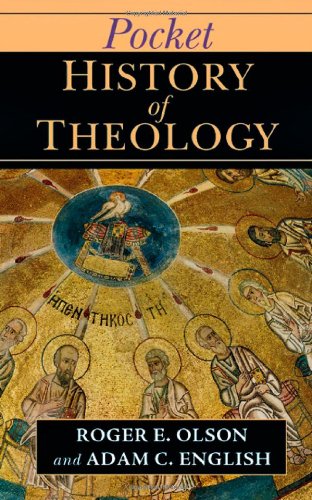
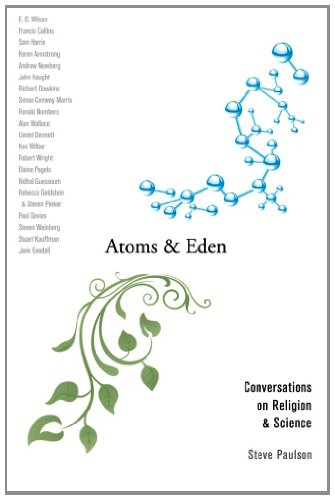
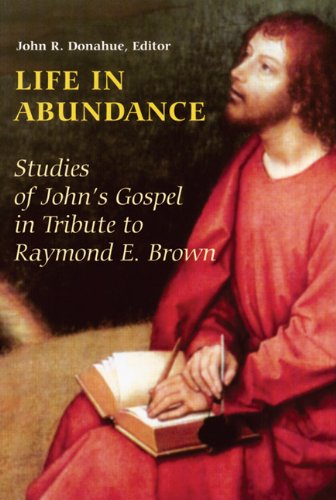
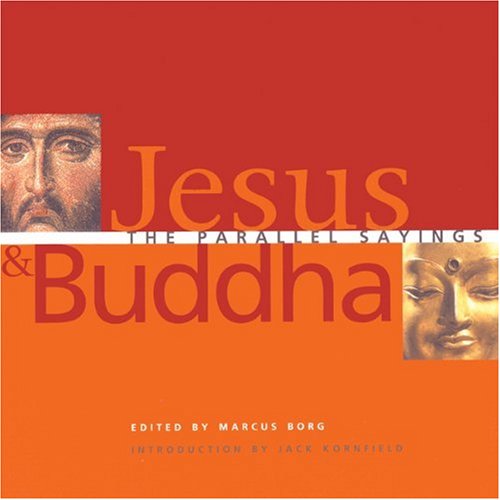
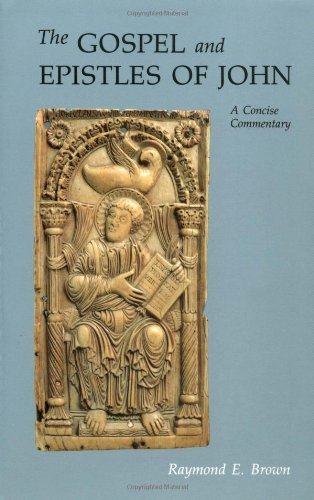
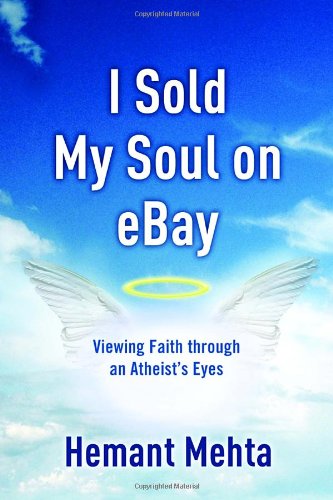
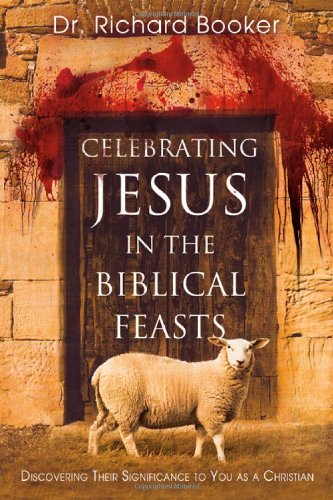


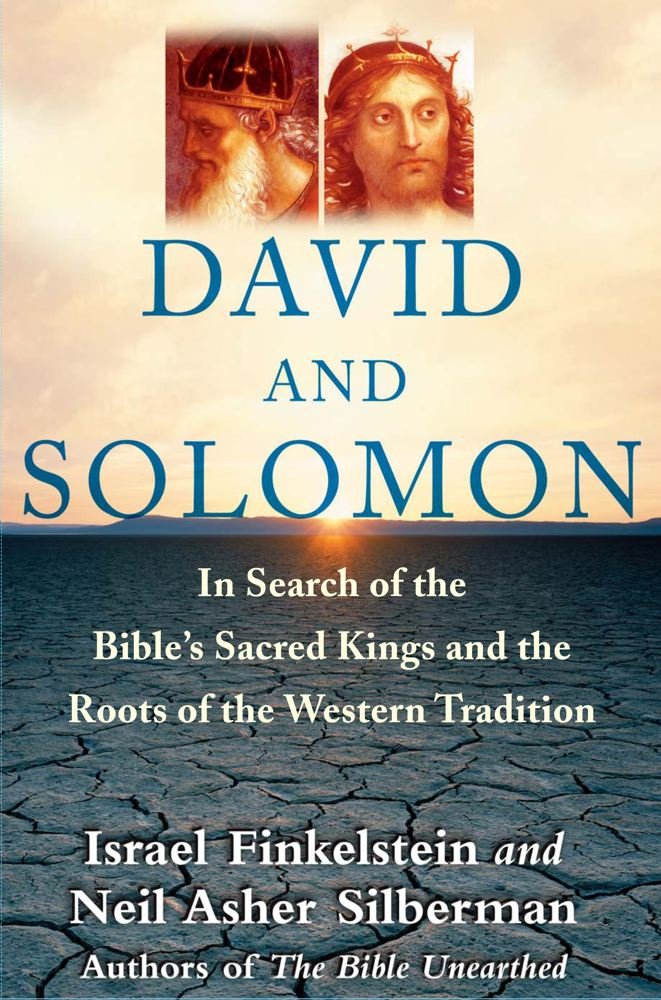
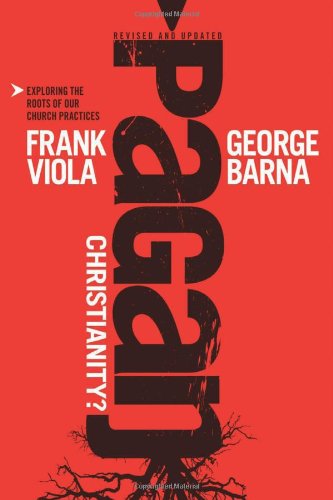


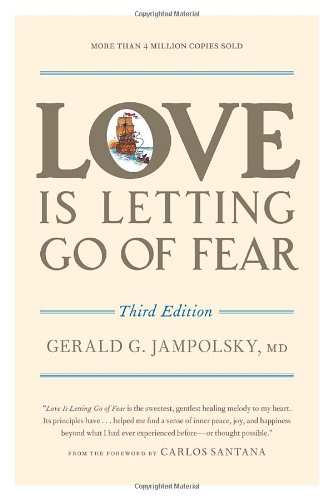
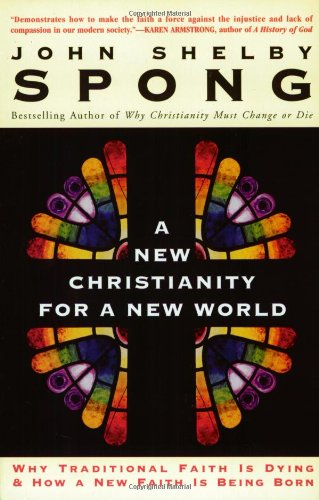
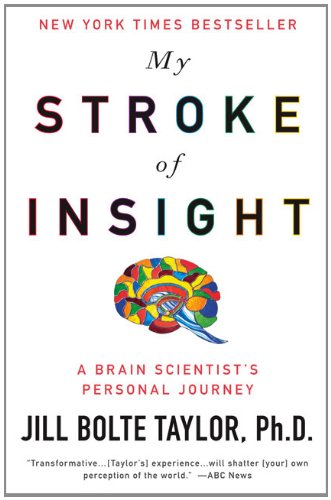
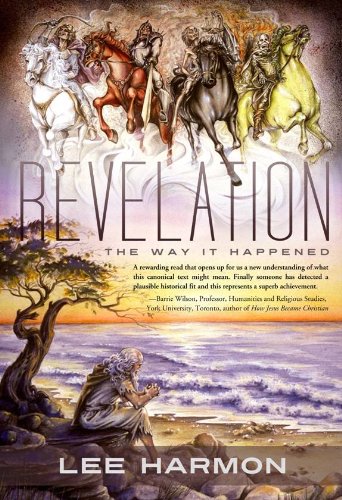
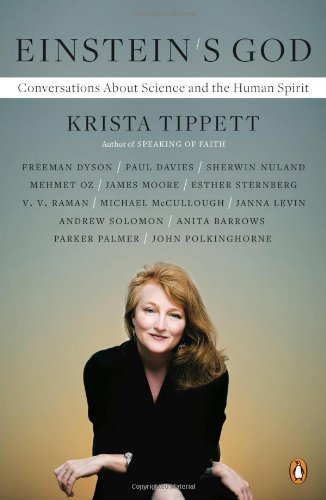
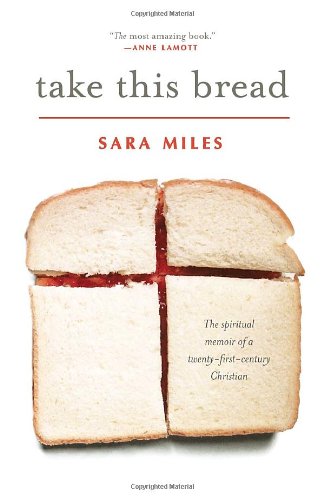
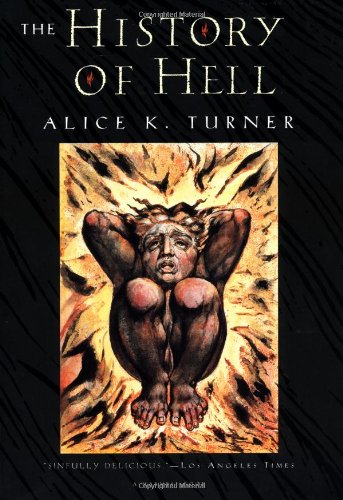









 354 Circles
354 Circles
 603 Goodreads Friends & Fans
603 Goodreads Friends & Fans

 Hello! I'm an author, historical Jesus scholar, book reviewer, and liberal Christian, which means I appreciate and attempt to exercise the humanitarian teachings of Jesus without getting hung up on any particular supernatural or religious beliefs.
The Bible is a magnificent book that has inspired and spiritually fed generations for thousands of years, and each new century seems to bring a deeper understanding of life’s purpose. This is true of not only Christianity; through the years, our age-old religions are slowly transforming from superstitious rituals into humanitarian philosophies. In short, we are growing up, and I am thrilled to be riding the wave.
I avidly read all thought-provoking religion titles. New authors: I'd love to read and review your book!
Hello! I'm an author, historical Jesus scholar, book reviewer, and liberal Christian, which means I appreciate and attempt to exercise the humanitarian teachings of Jesus without getting hung up on any particular supernatural or religious beliefs.
The Bible is a magnificent book that has inspired and spiritually fed generations for thousands of years, and each new century seems to bring a deeper understanding of life’s purpose. This is true of not only Christianity; through the years, our age-old religions are slowly transforming from superstitious rituals into humanitarian philosophies. In short, we are growing up, and I am thrilled to be riding the wave.
I avidly read all thought-provoking religion titles. New authors: I'd love to read and review your book!
 Hi! While Lee writes the articles and reviews the books, I edit, organize, and maintain the blog. The views expressed here are Lee's but I'm his biggest supporter! :-)
Hi! While Lee writes the articles and reviews the books, I edit, organize, and maintain the blog. The views expressed here are Lee's but I'm his biggest supporter! :-)
Connect With Me!